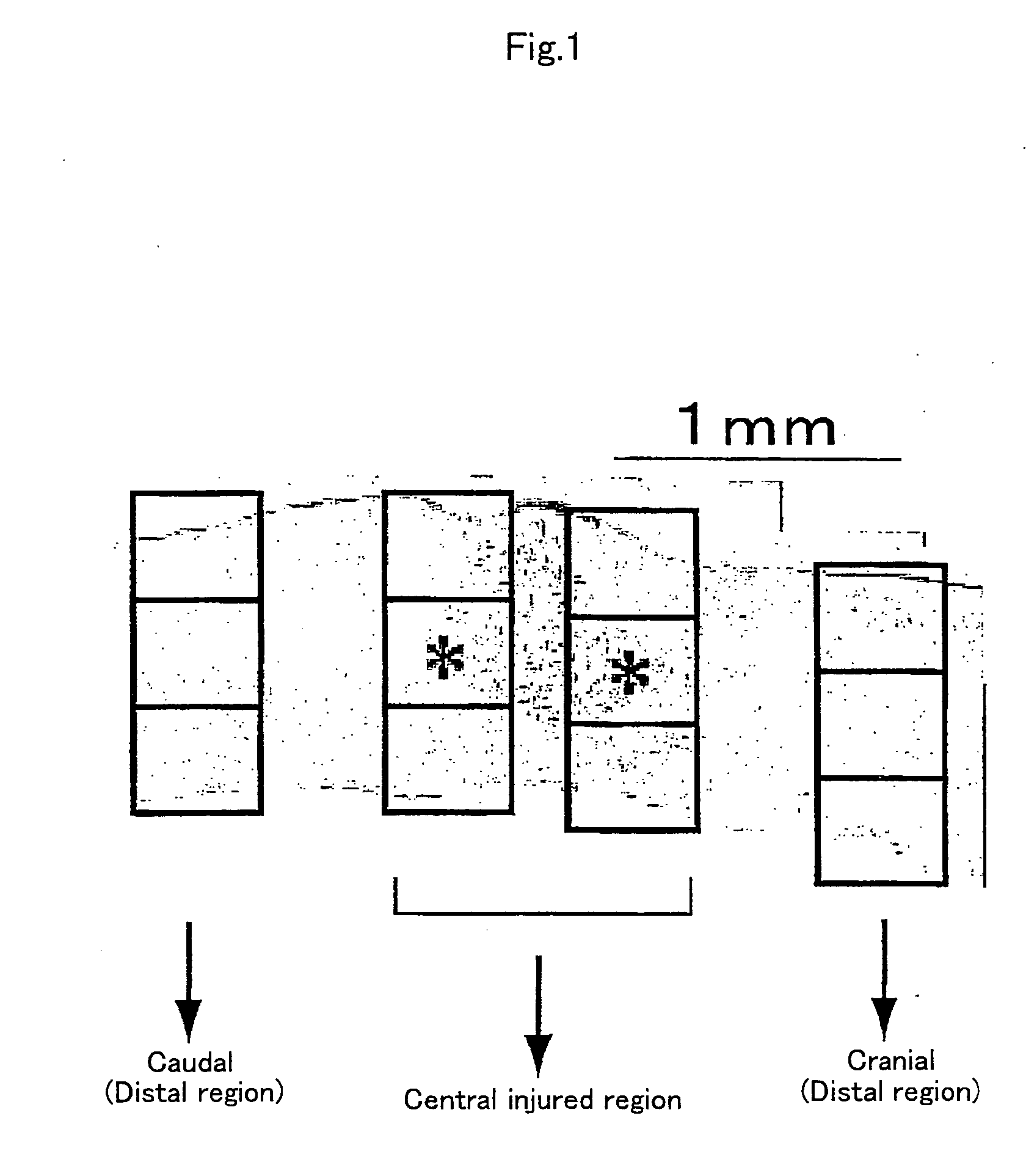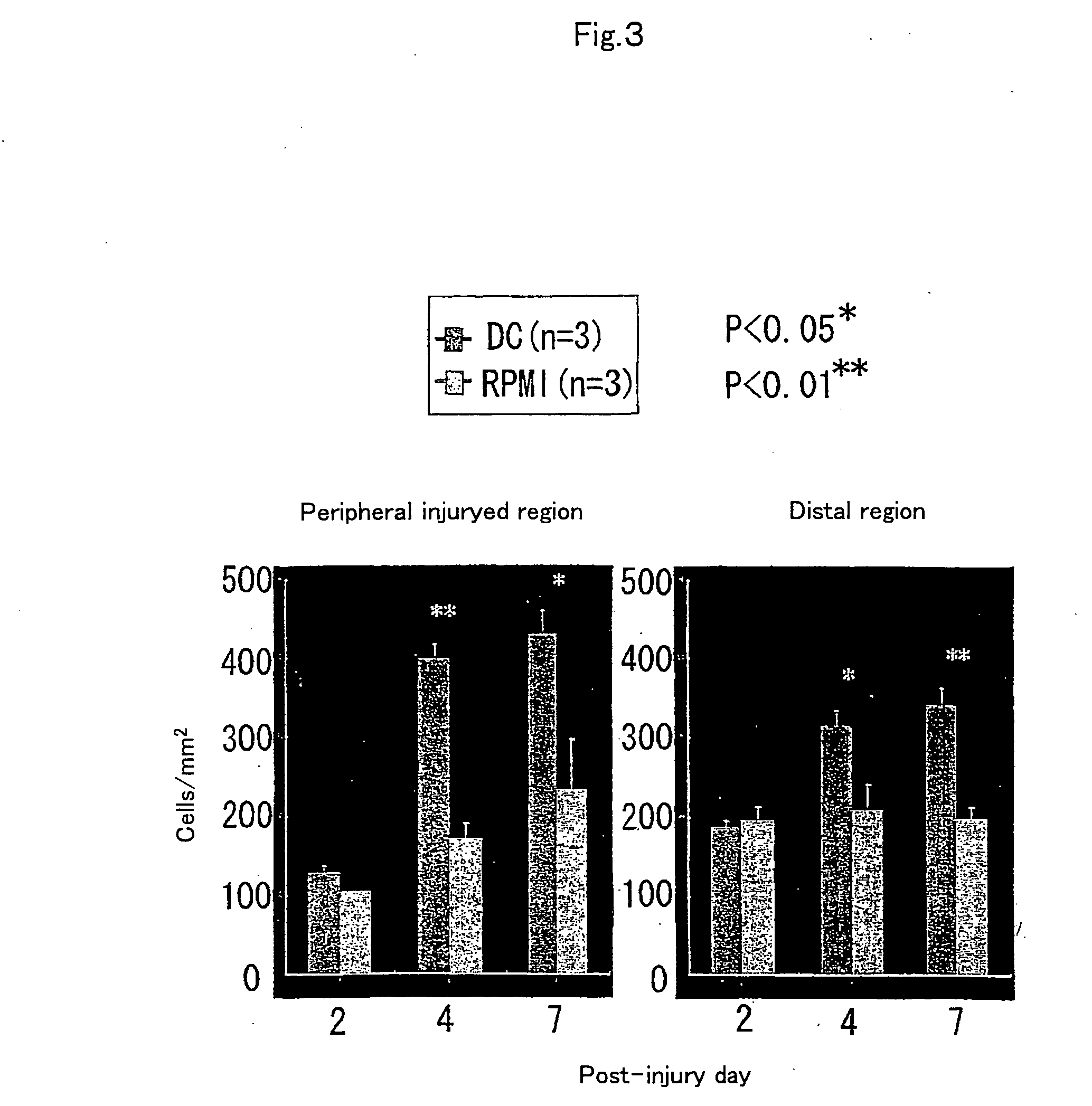Method of inducing growth of nerve stem cells
a neural stem cell and stem cell technology, applied in the direction of biocide, cardiovascular disorder, drug composition, etc., can solve the problems of traumatic spinal cord injuries, high steroid administration, strong systemic side effects, etc., and achieve low expression of mhc antigens, novo neurogenesis, and improvement of pathologic conditions
- Summary
- Abstract
- Description
- Claims
- Application Information
AI Technical Summary
Benefits of technology
Problems solved by technology
Method used
Image
Examples
example 1
Isolation of Dendritic Cells
[0065] Immature dendritic cells were obtained by isolating a CD11c-positive subset from spleens of 6-week-old BALB / c or C57BL / 6 female mice by the immunomagnetic bead method. Specifically, the spleens were first homogenated with 100 U / ml collagenase (Worthington Biochemical Corporation). Subsequently, the pellicle portion that was hard to separate was further incubated with 100 U / ml collagenase for 20 min in 5% CO2 at 37° C., and cells were separated. The cells obtained were suspended in 35% BSA solution, further overlaid with RPMI1640+10% fetus serum in a centrifuge tube, and then subjected to centrifugation at 3000 rpm for 30 min at 4° C. The cells at the interface layer between the 35% BSA solution and the RPMI1640+10% fetus serum solution were recovered. Next, by reacting for 15 min at 4° C. magnetic bead-coupled monoclonal antibody (2×108 beads, Miltenyi Biotech) against CD11c antigen with the recovered cells and magnetically separating the cells bo...
example 2
Induction of Proliferation of Endogenous Neural Stem Cells / Precursors by Transplantation of Dendritic Cells
[0066] A laminectomy of the eighth thoracic vertebra was performed on six-week old BALB / c or C57BL / 6 mice under ether anesthesia and by hemisecting the spinal cord on the left side with a scalpel, spinal cord-injured model mice were prepared. Immediately after injury, RPMI1640 medium with or without dendritic cells (1×105 / mouse) obtained by sorting a CD11c (+) subset using the immunomagnetic bead method was transplanted into the injured site.
[0067] To examine the reactivity of endogenous neural stem cells / precursors by transplantation of dendritic cells, using Musashi-1 antibody, which recognizes the cells, immunohistochemical staining was performed to investigate time-course changes in the number of positive cells. First, dendritic cell-transplanted mice on day 2, 4, and 7 after injury were subjected to perfusion fixation with 2% paraformaldehyde through the heart and frozen...
example 3
Analysis of Nerve Cells by Dedritic Cell Transplantation
[0072] It was found that transplantation of dendritic cells significantly increased the number of endogenous neural stem cells / precursors. On day 14 after injury, however, the number of neural stem cells / precursors decreased as compared with day 7, and morphological changes were observed. Thus, on the assumption that neural stem cells might have differentiated into nerve cells, the possibility of de novo neurogenesis by transplantation of dendritic cells was examined. On days 7 and 14 after the spinal cord of mature C57BL / 6 mice was injured and the dendritic cells were transplanted, the mice were subjected to perfusion fixation with 4% paraformaldehyde through the heart and sagittal frozen sections were prepared (n=3). The RPMI1640-transplanted group was used as the control (n=3). To label dividing, proliferating cells, the thymidine analogue bromodeoxyuridine (BrdU, Sigma Chemical Corporation) was administered intraperitoneal...
PUM
 Login to View More
Login to View More Abstract
Description
Claims
Application Information
 Login to View More
Login to View More - R&D
- Intellectual Property
- Life Sciences
- Materials
- Tech Scout
- Unparalleled Data Quality
- Higher Quality Content
- 60% Fewer Hallucinations
Browse by: Latest US Patents, China's latest patents, Technical Efficacy Thesaurus, Application Domain, Technology Topic, Popular Technical Reports.
© 2025 PatSnap. All rights reserved.Legal|Privacy policy|Modern Slavery Act Transparency Statement|Sitemap|About US| Contact US: help@patsnap.com



